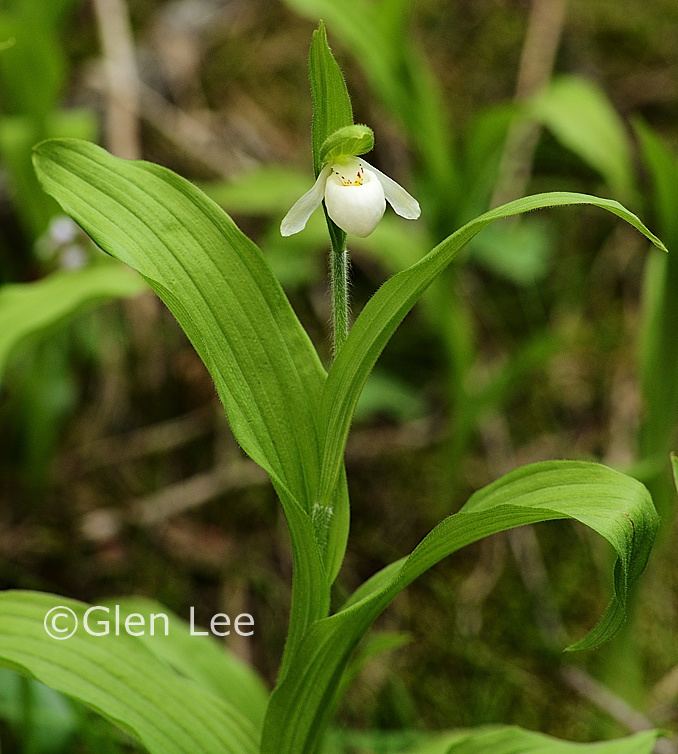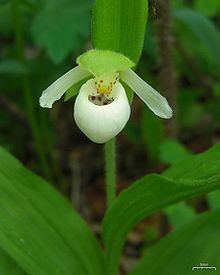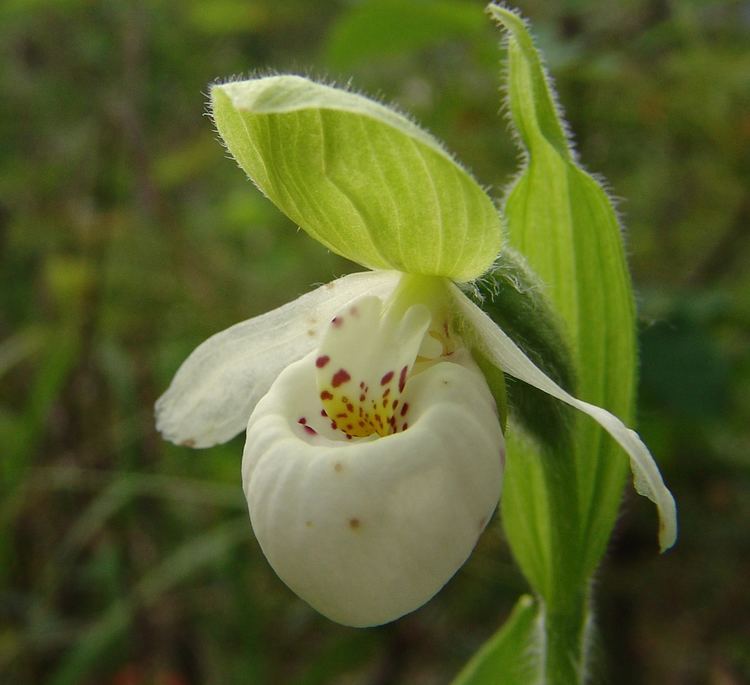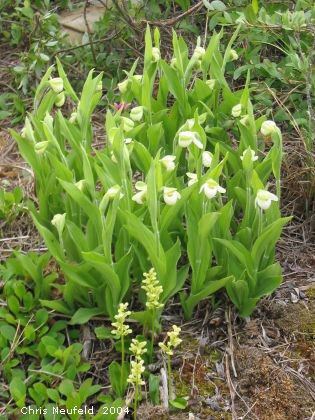Family Orchidaceae | Rank Species | |
 | ||
Similar Cypripedium montanum, Cypripedium arietinum, Cypripedium fasciculatum, Cypripedium candidum, Cypripedium californicum | ||
Cypripedium passerinum is a species of lady's slipper orchid known by the common names sparrow's-egg lady's-slipper, spotted lady's-slipper, and Franklin's lady's-slipper.
Contents

Description

This orchid is a rhizomatous monocot, perennial herb growing to a maximum height around 50 centimetres (20 inches). There are 3 to 7 oval or lance-shaped leaves arranged alternately on the stem, each up to 19 centimetres (7.5 inches) long by 6 cm (2.4 in) wide. The herbage is hairy and sticky. The inflorescence at the top of the stem contains one or two flowers. The flower has a dorsal sepal covering the petals and two lateral sepals. There are three petals: two flat white petals on either side and one central petal modified into a white or pink-tinged pouch with purplish spotting at the lip and inside, which is said to resemble a sparrow's egg. The fruit is a capsule. The plant may reproduce by seed but it more often reproduces vegetatively by sending up more stems from the rhizome.
Habitat

This species grows farther north than other Cypripedium. It grows in moist spruce forests at low elevations, tundra, dunes, and river terraces, lakeshores, and streambanks. It often grows on calcareous substrates. It is associated with plants such as white spruce (Picea glauca), Engelmann spruce (P. engelmannii), western redcedar (Thuja occidentalis), red-osier dogwood (Cornus sericea), willows (Salix spp.), horsetail (Equisetum spp.), longtube twinflower (Linnaea borealis), sedges (Carex spp.), one-sided pyrola (Orthilia secunda), and moss carpet (Pleurozium schreberi).
Range

Cypripedium passerinum is native to northern North America. It is widespread in Canada from British Columbia to Quebec, as well as all three northern territories. It also is found Alaska and in the Rocky Mountains of Montana, including inside Glacier National Park.
Importance to the Ecosystem

Little is known about the importance of C. passerinum to the ecosystem. In some studies, it has been noted that insects (e.g., moths, sawfly, and a leaf miner) have fed on them. Bees have been identified to pollinate other Cypripedium species and may be pollinators of C. passerinum but further research is required to confirm this. A variety of species grow with the Sparrow’s Egg Lady Slipper, such as Linnaea borealis, Carex concinna, Orthilia secunda, and Pleurozium schreberi
Importance to Humans

Cypripedium passerinum is a rare flower and not widely used by humans for medicine or food. As a rare and highly attractive species, Cypripedium passerinum may be of some interest to nature photographers.
Conservation
Cypripedium passerinum is an extremely rare plant and is at risk of becoming extinct. Its highly specific habitat requirements contribute to its risk of extinction. In the United States, C. passerinum is only found in two states, Alaska and Montana, and in locations that are threatened by oil and gas exploration.
